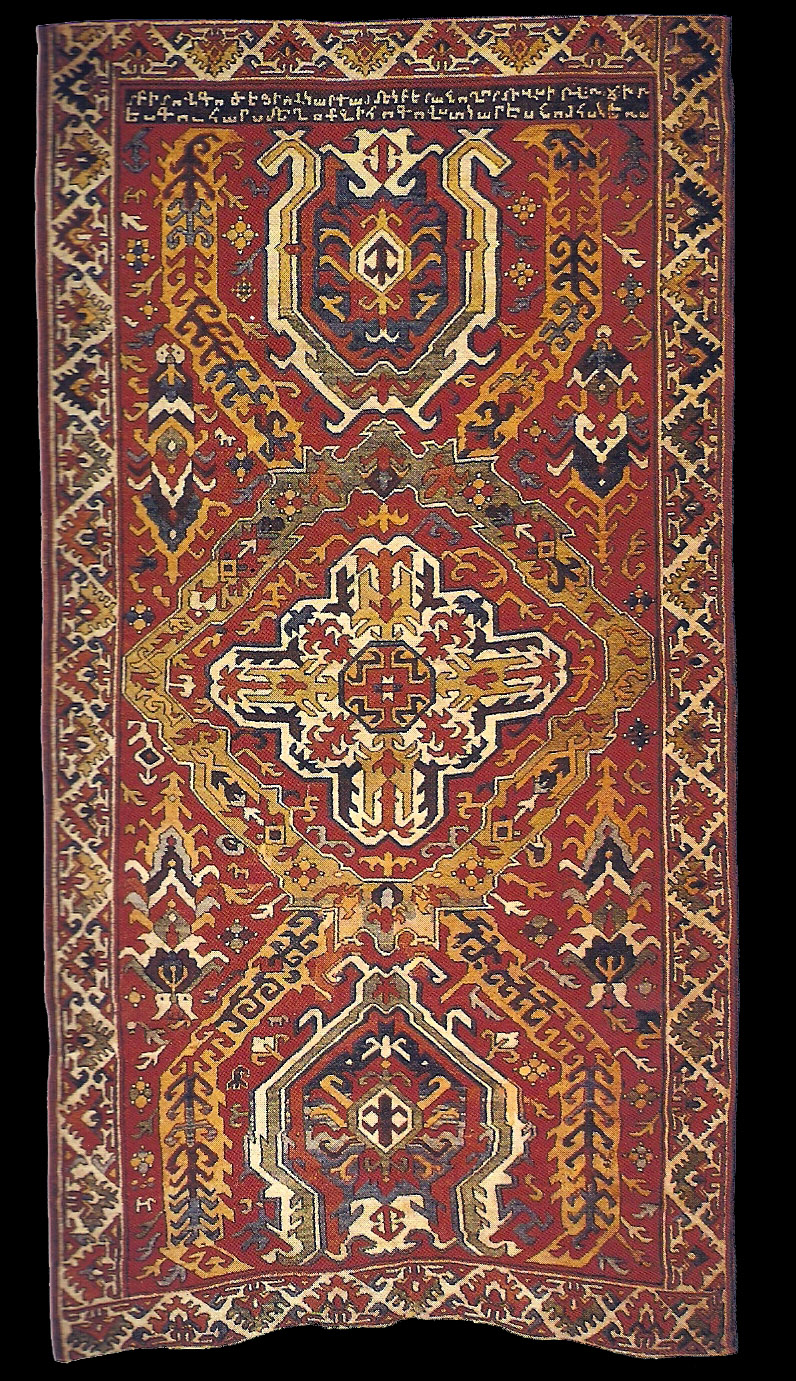|
Early Karabagh
rug, dated 1129 or 1149* (=1736 AD - this seems a plausible date for this
rug), Karabagh Province (Beylerbeyi),
Khamsa (meaning five in Arabic) Albanian** Melikdom (a feudal
possession), Safavid
Period, 178 x 351 cm. Inscription at the top of the field starts "I,
Gohar***, full of sin and weak of soul, made this carpet with my own hands,
let anyone who reads this, pray for me that I might be forgiven"
The carpet has a late classical Caucasian design, many aspects of which
can be seen in various different groups of later Karabagh weavings.
However it has a palette much less assertive than what one might assume
from previously published photographs.
Sold to a private collector at the 2003 Winter Antiques Show (for
$250,000)
|
|
* With its variously interpreted inwoven date (depending on how this is
read, and which calendar is used, it can be transcribed as early as 1679,
1700 or as late as 1732)
** Note: See Cf. Ioannisjan, Rossija i armjanskoje oswoboditelnije
dwischenije w 80-ch godach XVIII stoletija, 1947, p.16) -
"In the mountain region of Karabakh five melikdoms arose that were
governed by princes (meliks) of Albanian origin subordinated to the khan
of Karabakh"
*** - Gohar / Göhar / Gövhar is a female name and means
"kind of precious stone" in Turkish.
The name is used by Azeris and Armenians even today. |

